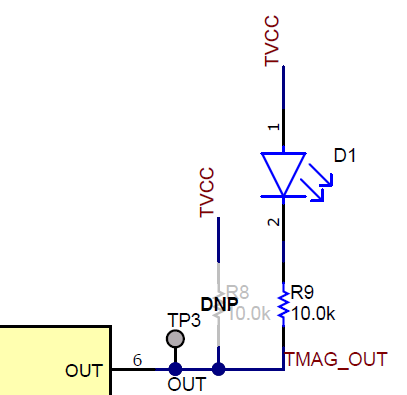SBAU376A December 2021 – March 2022 TMAG5328
- 1
- Abstract
- Trademarks
- 1Overview
- 2Kit Contents
- 3Related Documentation From Texas Instruments
- 4Hardware
- 5EVM Operation
- 6Schematics, PCB Layout, and Bill of Materials
- 7Revision History
5.2 Evaluation Without SCB and GUI (EVM Stand-Alone Mode)
The TMAG5328EVM can operate in a stand-alone mode that does not require the SCB or GUI. To operate in stand-alone mode, an external power supply must be connected to the TMAG5328EVM (see Section 4.2).
When in standby mode, BOP can be set using either the DAC, potentiometer, or fixed resistor options. Remember that the DAC output voltage cannot be changed without the SCB. The DAC output voltage will only be set to the value that was previously stored in its nonvolatile memory by the GUI. As a result, the DAC cannot be swept to find the sensed magnetic flux density of the TMAG5328 unless the SCB is connected. The potentiometer, however, does not require the SCB to estimate the sensed magnetic flux density TMAG5328 (see Section 4.1.2.1).
When in stand-alone mode, the TMAG5328 OUT pin can be probed at the test point that is labeled "OUT" on the board or on pin 9 of header J1. In addition, LED D1 can be used to visually observe the state of the TMAG5328 OUT pin. Figure 5-21 shows the LED circuit connected to the OUT pin on the TMAG5328. If OUT is asserted high, the LED is OFF. If OUT is asserted low, the LED is ON.
 Figure 5-21 OUT LED Circuit.
Figure 5-21 OUT LED Circuit.